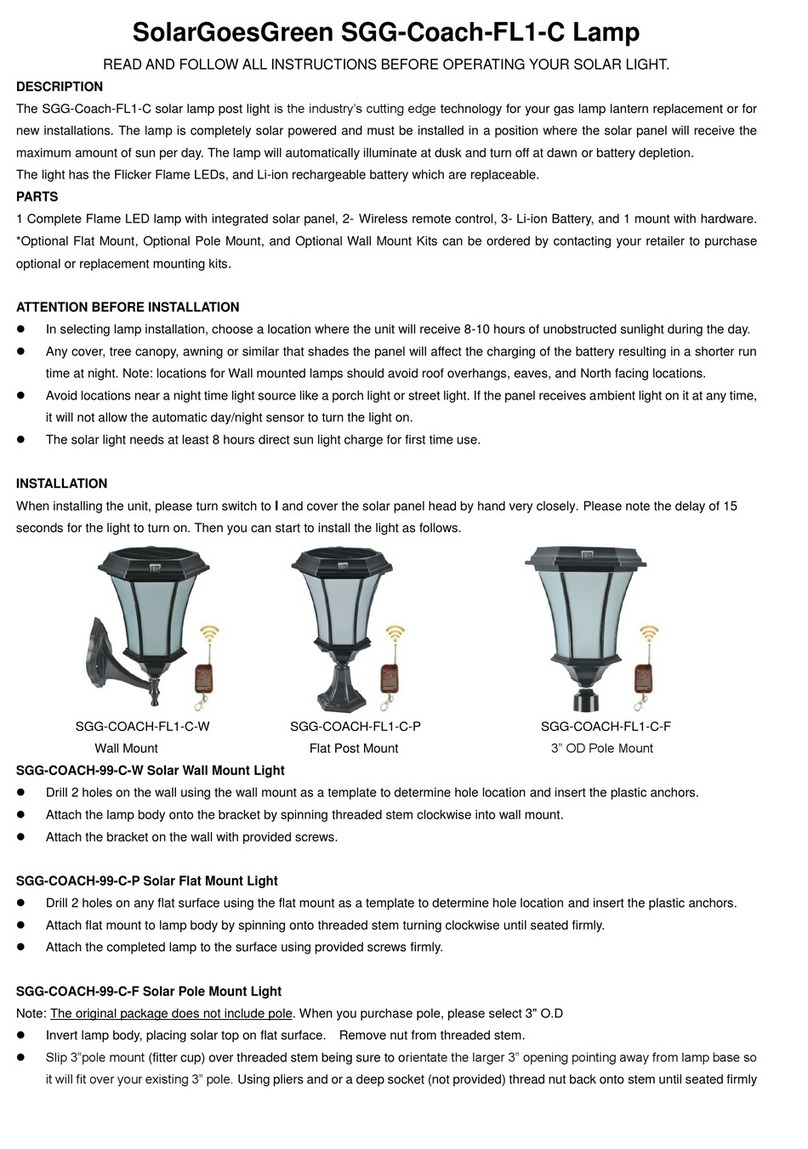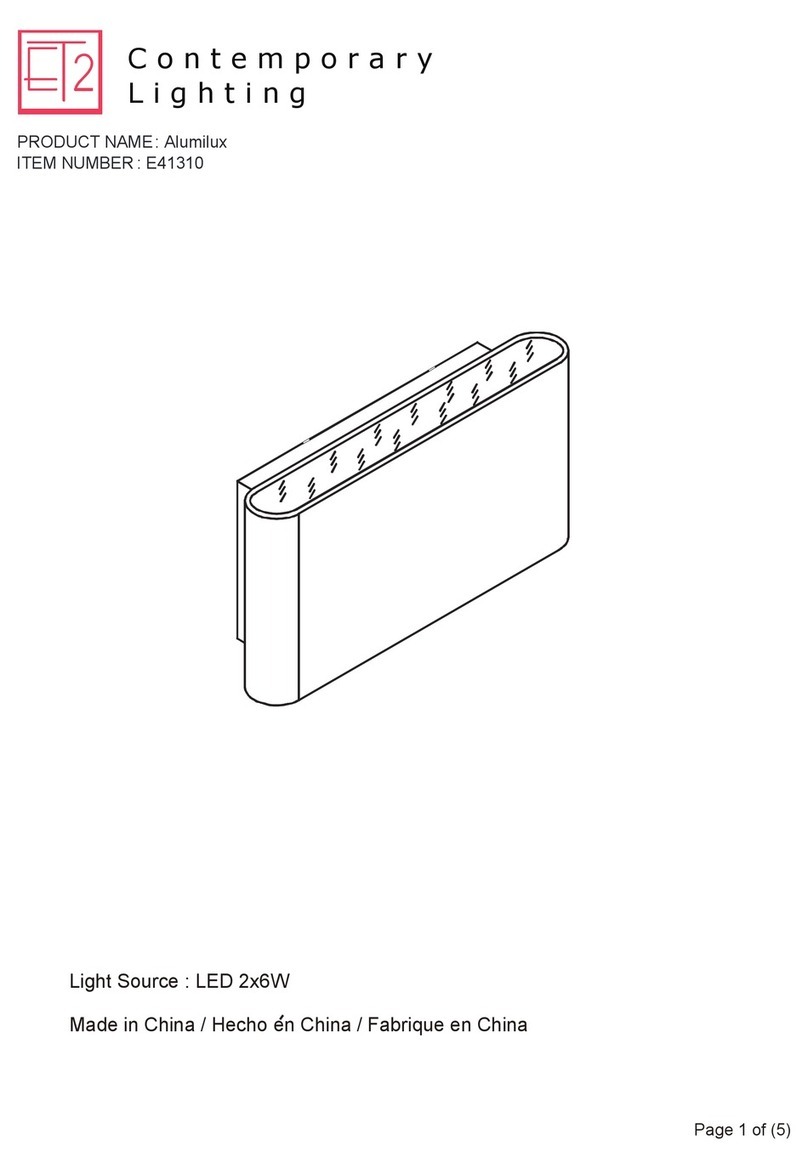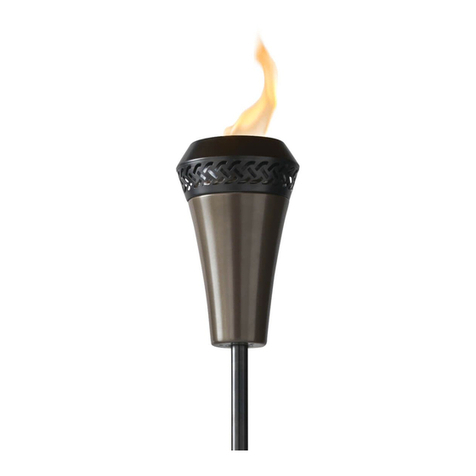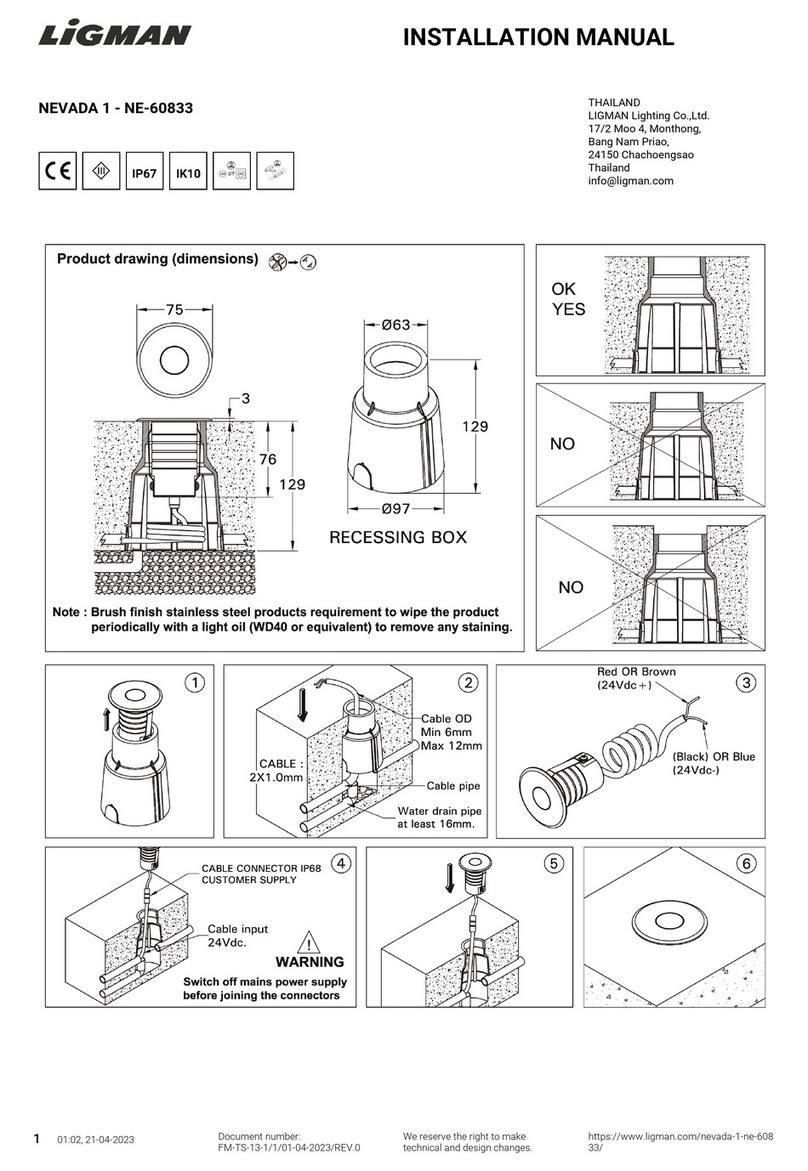SKYLUX PC User manual

Lichtkuppeln aus Polykarbonat
SKYLUX®PC
Skydomes in Polycarbonate
SKYLUX®PC
SKYLUX
AG.PLASTICS
MONTAGERICHTLIJNEN - CONSEILS DE POSE
MONTAGERICHTLINIEN - MOUNTING INSTRUCTIONS
EN 1873
Polykarbonaat-lichtkoepels
SKYLUX®PC
Lanterneaux ponctuels
SKYLUX®PC en polycarbonate

Ge chte Kl nt,
Deze Skylux®lichtkoepel is een hoogw rdig kw liteitsproduct, bron
v n ngen m n tuurlijk licht. Wil voor een goed gebruik deze tekst
nd chtig doornemen.
RICHT IJNEN
VOOR MONTAGE EN ONDERHOUD
1. MONTAGE VAN DE OPSTAND
Gebruik steeds een door AG.Plastics N.V. voorgestelde opstand, naargelang de dakbedekking.
1.1
Pvc-opstand (model 16/20, model 30/20, model 16/00, model 35/30 & model 16/20 EP)
- schroef de opstand vast aan de dakconstructie doorheen het indicatielijntje van de
flens (houtschroef 5,2x60, staaldakschroef 4,8x60). Begin op 7,5 cm van de uitein-
den. De asafstand van de andere schroeven mag maximaal 30 cm bedragen. Trek
de dakbedekking op tot tegen de bovenflens. Let er op dat bij de vlamlasmethode
het membraan en niet de opstand wordt opgewarmd (fig.1).
-Indien de pvc-opstand 16/00 rechtstreeks op het dak gemonteerd wordt, kunt u de
lip onderaan de opstand met een haakmesje verwijderen (fig.2).
-Voor alle types dakbedekkingssystemen verwijzen wij naar de voorschriften van de
dakbedekkingsfabrikant.
-Bij montage van een spindel of motor dient deze steeds op een met metaalinsert
voorziene zijde geplaatst te worden (fig.3). Dit is de kant van de sticker.
1.2
Polyester opstand (model H15/25 standaard, D15/20, D30/20, D50/20 & EP opstanden)
Zelfde bewerking als bij de pvc-opstand. Voor alle typen dakbedekkingssystemen
verwijzen wij naar de voorschriften van de dakbedekkingsfabrikant.
1.3 Metaal opstand
Zelfde bewerking als bij de pvc-opstand. Voor alle typen dakbedekkingssystemen
verwijzen wij naar de voorschriften van de dakbedekkingsfabrikant.
1.4 Andere opstand (fig.4)
Indien er een andere soort opstand gebruikt wordt die niet in het Skylux-aanbod steekt,
wat wij ten stelligste afraden (= geen waarborg op de koepel), dienen volgende pun-
ten in acht genomen te worden:
- De koepel dient rondom voldoende speling te hebben en mag zeker niet in contact
komen met de dakbedekking. Hiertoe moeten de hoeken van de opstand afgerond
worden.
- De max. buitenafmeting van de opstand (O1-2 ) = dagmaat van de koepel (B1-2 ) +
max. 12 cm, zijdelingse dakbedekking inbegrepen.
- De min. buitenafmeting van de opstand (O1-2 ) = dagmaat van de koepel (B1-2 ) + min
10 cm.
-De hoogte van de zelfgemaakte opstand moet minstens 15 cm (of meer) boven het
dakvlak uitsteken.
- De opstand moet rondom een vlak oppervlak hebben.
1.5 Volgens de EN 1873 mogen koepels maximaal onder een hoek van 25°
geplaatst worden. Voor rookafvoerkoepels (RWA) gelden specifieke voorschriften.
2. MONTAGE VAN DE KOEPE
Voorzorgen:
Controleer of u alle onderdelen ontvangen hebt. Zie na of er geen beschadigingen zijn
aan de koepel of opstand. Om schade aan de koepel door serre-effect te voorkomen
tijdens de montagevoorbereiding (oververhitting tussen koepelschalen en dakbedek-
king), is het af te raden de koepel op het dak te leggen. Ook onderplafonds net onder
de gemonteerde koepel kunnen schade veroorzaken aan de koepel.
Vastschroeven:
Draai de zwarte moeren die op de koepel zitten nooit los. Gebruik steeds en uitslui-
tend de meegeleverde universele zelfborende one-way RVS schroeven (sleufbits). Die
vindt u in de GEEL/RODE hoekbeschermer. Plaats de koepel op de opstand of het
raam. Verdeel de speling gelijk over de 4 zijden van de koepel. Voor S YLUX®
WINDOW met ingebouwde motor volgt u de specifieke voorschriften. Schroef de
universele zelfborende one-way RVS schroeven van de koepel vast in het raam of
de opstand. De zelfborende one-way RVS schroeven zijn geschikt voor de door
AG.Plastics voorziene opstanden uit PVC, PRV, en metaal. Voorboren in metalen op-
standen met ø 3,5 mm. Bevestig de one-way schroeven kruisgewijs en span niet te
hard en gelijkmatig aan. De one-way schroeven niet invetten voor het indraaien.
Gebruik nooit silicone of PUR als afdichting tussen koepel en raam of opstand. Ook an-
dere materialen zoals PS, PVC’s, bitume, polymeren,... worden afgeraden.
Montage van de koepeldop:
Als alle one-way schroeven goed vastgedraaid zijn, kan je deze met de metalen
afdekkapjes extra beveiligen. Daarna moet het geheel afgedekt worden met de koe-
peldop. Deze vindt u ook in de hoekbescherme(s)r. De koepeldop wordt op de moer
geduwd (fig.5) en met een halve draaibeweging klaargezet voor de definitieve klip-
stand. De dop zakt op dit ogenblik iets dieper over de moer (fig.6). Nu staat ook de
matte lijn op de dop evenwijdig met de twee uitsparingen in de moer. In deze
positie zit de dop stevig en regendicht op de moer, maar kunt u later nog steeds de
dop van de moer verwijderen. Wenst u de koepel extra moeilijk toegankelijk te maken
voor vandalen of inbrekers, druk dan stevig verder op de dop zodat deze volledig
vastklikt op de moer (fig.7). De dop zit nu op de moer waardoor de moer ontoeganke-
lijk is. Deze beweging is onomkeerbaar. De one-way schroef, metalen kap en
koepeldop vormen een optimale beveiliging op de pantserkoepel.
3. Indien u een SKG of EN 1627:2011 en EN 5096 conforme montage wenst, dient u
gebruik te maken van de SKG-set en deze op correcte manier te plaatsen.
4. ONDERHOUDSTIPS
- Jaarlijks de bevestigingen en de dichtingsband controleren.
- oepels niet reinigen of aanraken met producten die niet geschikt zijn voor acrylaat of
polycarbonaat zoals: silicone, houtbeschermers, lijmen, niet geschikte dichtingsband,
chemische dampen,...
- Teervlekken enkel met terpentijn verwijderen en grondig met water afspoelen .
- Reinigen met water en niet agressieve zeep (geen schuurmiddel),
steeds overvloedig afspoelen .
- rassen : raadpleeg uw leverancier voor een passende poliercrème.
- Pvc-opstand reinigen met pvc-reiniger.
- Spuit nooit insectenspray op de koepel.
- Metaal en polyester opstanden dienen extra afgewerkt te worden.
OP AANVRAAG ZENDEN WIJ U GRAAG VERDERE TECHNISCHE FICHES TOE (bvb.
MONTAGE EN AANSLUITING VAN OPENINGS- EN BRANDSYSTEMEN).
Cher Client,
Cette coupole Skylux®est un produit de qu lité supérieure, source de
lumière n turelle et gré ble. Afin d' ssurer un bon us ge, nous vous
prions d'étudier ttentivement le texte suiv nt.
CONSEI S
DE MONTAGE ET D'ENTRETIEN
1. MONTAGE DE A COSTIERE
Utilisez une costière en provenance de chez AG.Plastics S.A, selon le type de recouvre-
ment de toiture.
1.1
Costière en PVC (modèle 16/20, modèle 30/20, modèle 16/00, modèle 35/30 & modèle 16/20 EP)
-
Vissez la costière à la construction de toiture à travers la ligne d’indication du rebord
(vis à bois
5,2x60 ou vis à métal 4,8x60). Commencez à 7,5 cm des extrémités. La distance
entre-axes des autres vis ne peut pas dépasser 30 cm. Montez le recouvrement de
toiture jusqu’au rebord supérieur.Veillez à ce que la membrane et non la costière soit
réchauffée lorsque vous soudez à la flamme. (dessin 1).
-Si la costière en PVC 16/00 se fixe directement sur la toiture, vous pouvez enlever la
languette en bas de la costière avec un cutter à crochet spécial (dessin 2).
- Nous nous référons aux consignes du fabricant de recouvrement de toiture pour tous
les types de recouvrement.
- Lors du montage d’un vérin ou moteur, il doit toujours être fixé à la face prévue d’une
insertion métallique (dessin 3). Il s’agit donc de la face avec autocollant.
1.2
Costière en polyester (modèle H15/25 standard, D15/20, D30/20, D50/20 & costières EP)
Même description que pour la costière en PVC. Nous nous référons aux consignes
du fabricant de recouvrement de toiture pour tous les types de recouvrement.
1.3 Costière en métal
Même description que pour la costière en PVC. Nous nous référons aux consignes
du fabricant de recouvrement de toiture pour tous les types de recouvrement.
1.4 Autre type de costière (dessin 4)
Si vous utilisez un autre type de costière que celle de la gamme Skylux, ce que nous
déconseillons formellement (= la garantie de la coupole est supprimée), faites atten-
tion aux choses suivantes:
- La coupole doit être posée avec assez de jeu et ne peut avoir aucun contact avec le
recouvrement de toit. Pour cette raison, les coins de la costière doivent être arrondis.
- La largeur maximale du rebord supérieur de la costière(O 1-2 ) = ouverture jour de la
coupole(B1-2) + max.12 cm y compris le recouvrement de toit latéral.
- Largeur minimale du rebord supérieur de la costière (O 1-2 ) = ouverture jour de la
coupole(B1-2) + min.10 cm.
- La hauteur de la costière de votre propre fabrication doit dépasser d'au moins 15 cm
le niveau fini de la toiture.
- La costière doit avoir une surface entièrement plate.
1.5 Selon la norme EN 1873, les coupoles peuvent être placées sous un angle de
25° au maximum. Pour exutoires de fumée (EFC) il y a des consignes specifiques.
2. MONTAGE DE A COUPO E
Précautions:
Contrôlez si la livraison est complète et si la coupole et la costière ne sont pas en-
dommagées. Afin d’éviter des dégâts à la coupole pour cause d’effet de serre lors des
préparations au montage (surchauffage entre les parois de coupoles et le revêtement
de toiture), nous déconseillons de poser la coupole sur la toiture. Des faux-plafonds
en dessous de la coupole peuvent causer des dégâts à la coupole.
Fixation:
Ne dévissez jamais les écrous noirs de la coupole. Utilisez uniquement les vis inoxy-
dables autoperceuses et unidirectionelles universelles (à tête à rainure) livrées. Vous
les retrouverez dans la protection de l’angle JAUNE/ROUGE. Positionnez la cou-
pole sur la costière ou le châssis. Répartissez le jeu de manière égale entre les 4 faces
de la coupole. Pour le S YLUX®WINDOW avec moteur intégré, il faut respecter les
consignes spécifiques. Vissez les vis inoxydables autoperceuses et unidirectionelles
universelles de la coupole dans le châssis ou la costière. Les vis inoxydables autoper-
ceuses et unidirectionelles sont appropriées aux costières en PVC, PRV et en métal
prévues par AG.Plastics. Préforer dans des costières métalliques avec ø 3,5 mm. Fixez
les vis unidirectionelles en diagonal et serrez-les de manière égale mais pas trop fort.
Ne graissez pas les vis unidirectionelles avant de les serrer. N’utilisez jamais de sili-
cone ni de polyuréthane pour faire l’étanchéité entre la coupole et la costière ou le
châssis. L’usage d’autres matériaux tels que le PS, les PVC, le bitume, les polymè-
res,… est fortement déconseillé.
Montage du capuchon:
Si toutes les vis unidirectionnelles sont bien serrées, vous pouvez les protéger sup-
plémentairement avec les capuchons en métal. Puis, il faut recouvrir l’ensemble avec
des capuchons. Vous les retrouverez également dans la (les) protection(s) de l’angle.
e capuchon se pousse sur l’écrou (dessin 5). Préparez-le à la position définitive
par un demi-mouvement rotatif. Le capuchon s’enfonce à ce moment un peu plus sur
l’écrou (dessin 6). La ligne terne du capuchon est maintenant parallèle aux deux
entailles de l’écrou. Dans cette position, le capuchon est fixé solidement et de façon
étanche sur l’écrou. Vous restez néanmoins toujours dans la possibilité d’enlever à
nouveau le capuchon de l’écrou. Si vous désirez que la coupole soit nettement moins
accessible aux vandales ou cambrioleurs, il faut appuyer avec force sur le capuchon
de façon que celui-ci se clipse définitivement sur l’écrou. Le capuchon se trouve main-
tenant sur l’écrou (dessin 7) de sorte que celui-ci soit entièrement inaccessible. Ce
mouvement est irréversible. La vis unidirectionnelle, le capuchon en métal et
le capuchon forment la protection idéale de la coupole cuirassée.
3. Si vous désirez un montage conforme à la norme SKG ou EN1627 : 2011 et
EN5096, il faut utiliser le set SKG de manière correcte.
4. CONSEI S D’ENTRETIEN
- Contrôlez les fixations et le ruban adhésif d'étanchéité 1 fois par an.
- Ne nettoyez pas les coupoles avec des produits qui agressent l’acrylique ou le poly-
carbonate tels que: silicone, protecteur de bois, rubans d'étanchéité incompatibles,
colles, joints, fumées chimiques... Evitez également de les toucher avec ces produits.
- N'enlevez les taches de goudron qu'avec de la terpentine, suivi d'un rinçage intense
à l' eau.
- Nettoyage: à l'aide d'eau et de savon non agressif (pas abrasif !!!), toujours suivi d'un
rinçage intense à l'eau.
- Griffes: consultez votre fournisseur pour une crême polissante adaptée.
- Nettoyez la costière en PVC avec un nettoyant PVC.
- Ne vaporisez jamais des insecticides sur la coupole.
- Les costières métalliques et polyester doivent recevoir une finition supplémentaire.
A VOTRE DEMANDE, NOUS VOUS ENVERRONS DES FICHES TECHNIQUES PLUS DE-
TAILLEES (P.EX. MONTAGE ET RACCORDEMENT DE NOS SYSTEMES OUVRANTS ET
ANTI-FEU).

De r customer,
This Skylux® rooflight, source of ple s nt n tur l d ylight, is high
qu lity product.
For optim l use, ple se re d the instuctions below c refully.
MOUNTING AND CARE
INSTRUCTIONS
1. MOUNTING THE CURB
Always use a curb from AG.Plastics N.V., in accordance with the roof covering.
1.1
PVCu curb (model 16/20, model 30/20, model 16/00, model 35/30 & model 16/20 EP)
- Screw the curb on the roof construction through the indication line of the flange
(tim-
ber screws 5,2x60 or metal screws 4,8x60)
. Start at 7,5 cm from the extremities. The
axis distance of the other screws must not exceed 30 cm. Pull up the roofing under-
neath the top flange. Beware that the membrane and not the curb is warmed up when
using the welding with flame method as shown on figure 1.
-Should you wish to fix the PVCu curb 16/00 directly on the roof, please take away the
lip at the bottom of the curb with a special bracket cutter (see fig. 2).
- We refer to the regulations of the roof cover manufacturer for all the types of roofing.
-The spindle or motor must always be fixed on the side, provided with a metal insertion
(see fig. 3). This is the side of the sticker.
1.2 Polyester curb (model H15/25 standard, D15/20, D30/20, D50/20 & EP curbs)
Same procedure as for the PVCu curb. We refer to the regulations of the roof cover
manufacturer for all the types of roofing.
1.3 Metal curb
Same procedure as for the PVCu curb. We refer to the regulations of the roof cover
manufacturer for all the types of roofing.
1.4 Other curb
(
see fig. 4)
If any other curb is used which is not in the Skylux range - something we definitely ad-
vise against (= in that case the rooflight is no longer covered by the guarantee) -
please observe the following instructions:
-There must be sufficient clearance all around the dome and the dome must definitely
not come into contact with the roof covering.To make sure it does not, the corners of
the curb should be rounded off.
- The maximum outside dimension of the curb (O1-2 ) = measure in the clear of the
dome (B1-2 ) + max.12 cm, including sidelong roofing.
- The minimum outside dimension of the curb (O1-2 ) = measure in the clear of the
dome(B1-2 ) + min.10 cm.
- The self-made curb must rise at least 15 cm above the roof level.
-The surface of the curb must be flat all around.
1.5 According to EN 1873, domes are to be mounted under an angle of maximum
25°. For smoke and heat extraction domes (SHE), there are specific instructions.
2. MOUNTING THE ROOF IGHT
Precautions:
Verify if the delivery is complete and if the dome or the curb isn’t damaged. To avoid
damage on the dome because of greenhouse effect during the mounting prepara-
tions (excessive build-up of heat between the dome and the roofing), take care not to
put the dome directly on the roof covering. False ceilings can also cause damage
on the dome.
Fixing:
Never unscrew the black nuts of the dome. Only use the delivered universal stainless
selfperforating one-way screws (with notched head). You’ll find these in the
YELLOW/RED corner protection. Fix the dome on the curb or the frame. Divise the
clearance over the 4 sides of the dome. For the S YLUX®WINDOW with built-in motor,
please respect the specific instructions. Screw the universal stainless selfperforating
one way screws of the dome in the frame or the curb. The stainless selfperforating one
way screws are to be used with PVCu, GRP or metal curbs from AG.Plastics. Predrilling
in metal curbs with ø 3,5mm. Screw the one way screws cross-wise and equally; do not
overtight. Do not grease the one way screws before screwing. Never use silicone or
polyurethane as sealant between the dome and the frame or curb. Other materials like
PS, PVCu, bitume, polymer,... are preferably not to be used.
Fixation of the dome cap:
Once all the one way screws are fixed, one can addionally secure them with the metal
caps. After that the entity must be covered by the dome cap. You’ll find these in the
corner protection(s) as well. The dome cap is put on the nut (fig. 5) and prepared for
the final clip position by twisting at half a turn. The cap now sinks deeper on the nut
(fig. 6). The mat stripe on the cap is parallel with the two notches in the nut. In this
position, the cap is firmly fixed and protected from rain on the nut (fig. 7), but one can
still remove the cap of the nut. Should you wish to additionally secure your dome
against vandals or burglars, press firmly on the cap so it clipses completely over the
nut. The cap is now definitely on the nut, which makes it inacessible. This operation is
almost irreversible. The one way screw, the metal cap and the dome cap make up
the optimum safety on the armour dome
.
3. If you want an installation in conformity with the SKG or EN1627:2011 and
EN5096 norm, you need to use the SKG set and correctly install it.
4. CARE AND C EANING
- Check the fixings and the sealing tape once a year.
- Do not clean or touch the domes with products aggressive to acrylic or polycarbonate,
such as silicone, wood protectors, adhesives, unsuited sealing tapes, chemical
fumes...
- Remove tar stains with turpentine only and rinse well with plenty of pure water.
- Wipe off with mild soapy water (no abrasives) and always rinse well with plenty of
pure water.
- Scratches: contact your supplier for a suitable polishing cream.
- Clean the PVCu curb with PVCu cleaner.
- Never spray any insecticide on the dome.
- The metal and polyester curbs must receive an additional finishing.
ON SIMPLE REQUEST WE CAN SEND YOU FURTHER TECHNICAL DETAILS (E.G.
MOUNTING AND INSTALLATION OF OPENING SYSTEMS AND SMOKE HATCHES).
Sehr geehrter Kunde,
Diese Skylux®Lichtkuppel ist ein hochwertiges Qu litätsprodukt, eine
Quelle ngenehmes n türliches Lichts. Für eine gute Benutzung
bitten wir Sie, diesen Text ufmerks m zu lesen.
RICHT INIEN
FÜR MONTAGE UND PF EGE
1. MONTAGE DES AUFSATZKRANZES
Verwenden Sie immer einen von AG.Plastics N.V. vorgestellten Aufsatzkranz, je nach der
Dachbedeckung.
1.1 PVC Aufsatzkranz (Typ 16/20, Typ 30/20, Typ 16/00, Typ 35/30 & Typ 16/20 EP)
- Schrauben Sie den Aufsatzkranz an der Dachkonstruktion fest durch die Indikations-
Linie vom Flansch
(Holzschrauben 5,2x60 oder Metallschrauben 4,8x60 )
. Fangen Sie
am 7,5 cm der Enden an. Die Achsdistanz der anderen Schrauben soll maximal 30 cm
betragen. Ziehen Sie die Dachbedeckung bis zum oberen Flansch.
Achten Sie darauf, dass beim Schweißen mit Flamme die Membran und nicht der
Aufsatzkranz geheizt wird (siehe Bild 1).
- Wenn Sie den PVC Aufsatzkranz 16/00 direkt aufs Dach montieren möchten, können
Sie die Lippe unten am Aufsatzkranz mit einem speziellen Hakenmesser entfernen
(siehe Bild 2).
-Für alle Type Dachbedeckungssysteme weisen wir auf die Vorschriften des
Dachbedeckungsherstellers hin.
- Während der Montage von einem Spindel oder Motor, soll dieser immer auf der Seite
versehen von einer Metallinsertion, montiert werden (siehe Bild 3). Es handelt sich um
die Seite mit dem Aufkleber.
1.2
Polyester Aufsatzkranz (Typ H15/25 standard, D15/20, D30/20, D50/20 & EP Aufsatzkränze)
Ähnliches Verfahren wie beim PVC Aufsatzkranz. Für alle Type Dachbedeckungs-
Systeme weisen wir auf die Vorschriften des Dachbedeckungsherstellers hin.
1.3 Aufsatzkranz aus Metall
Ähnliches Verfahren wie beim PVC Aufsatzkranz. Für alle Type Dachbedeckungs-
Systeme weisen wir auf die Vorschriften des Dachbedeckungsherstellers hin.
1.4 Anderer Aufsatzkranz (
siehe Bild
4)
Wenn ein anderer Aufsatzkranz als einer vom Skylux Sortiment verwendet wird, wovon
wir entschieden abraten
(= keine Garantie auf die Kuppel) müssen folgende Punkte
beachtet werden:
- Die uppel muss rundherum genügend Spielraum haben und darf auf keinen Fall mit
der Dachbedeckung in ontakt kommen. Dazu müssen die Ecken des Aufsatz-
ranzes abgerundet werden.
-Das maximale Außenmaß des Aufsatzkranzes (O1-2) =Tagesmaß der uppel
(B1-2) + maximal 12 cm, seitliche Dachbedeckung einbegriffen.
- Das minimale Außenmaß des Aufsatzkranzes (O1-2) = Tagesmaß der uppel
(B1-2) + minimal 10 cm.
-Die Höhe des selbstgemachten Aufsatzkranzes muss mindestens 15 cm über die
Dachfläche hinausragen.
- Der Aufsatzkranz muss rundherum eine flache Oberfläche haben.
1.5 Nach EN 1873 sollen die Kuppeln unter einem Winkel von maximal 25°
montiert werden.
Für Rauch- und Warmeabzugkuppeln (RWA) gibt es spezifische Vorschriften.
2. MONTAGE DER KUPPE
Vorsorge:
Prüfen Sie ob die Lieferung komplett ist und ob die Lichtkuppel oder der Aufsatzkranz
nicht beschädigt ist. Um Schaden an der uppel wegen Treibhauswirkung während
der Montagevorbereitung vorzubeugen (Überhitzung zwischen uppelschalen und
Dachbedeckung), raten wir ab die uppel aufs Dach zu liegen. Auch Unterplafonds
gerade unter der uppel können Schaden an der uppel verursachen.
Festschrauben:
Schrauben Sie nie die schwarzen Muttern der Lichtkuppel los. Verwenden Sie nur die
mitgelieferten selbstbohrenden universalen Einweg-Edelstahlschrauben (Schlitzbits).
Sie finden diese im GELBEN/ROTEN Eckschutz. Montieren Sie die uppel auf
den Aufsatzkranz oder den Rahmen. Verteilen Sie den Spielraum egal auf die 4 Seiten
der uppel. Für den S YLUX®WINDOW mit eingebautem Motor müssen die spezifi-
schen Vorschriften beachtet werden. Schrauben Sie die selbstbohrenden universalen
Einweg-Edelstahlschrauben der uppel in den Rahmen oder Aufsatzkranz fest. Die
selbstbohrenden Einweg-Edelstahlschrauben sind geeignet für Aufsatzkränze aus
PVC, GF und Metall von AG.Plastics ausgeliefert. Vorbohren in Metallaufsatzkränzen
mit ø 3,5 mm. Befestigen Sie die Einweg-Schrauben kreuzweise und spannen Sie
diese nicht zu hart an. Die Einweg-Schrauben nicht anfetten vor dem Anschrauben.
Verwenden Sie nie Silikon oder Polyurethan als Abdichtung zwischen uppel und
Rahmen oder Aufsatzkranz. Auch andere Materialien wie PS, PVC, Bitumen,
Polymeren,... werden abgeraten.
Montage der Klippkappe:
Wenn alle Einwegschrauben fest angeschraubt sind, kann man diese mit den Metall-
appen zusätzlich sichern. Danach muss das Ganze mit der lippkappe abgedeckt
werden. Sie finden diese auch im Eckschutz(e). Die Kappe wird auf die Mutter
gedrückt (Bild 5) und mit einer halben Drehbewegung zum endgültigen lippstand
gebracht. Die appe sinkt ein Bisschen tiefer über die Mutter (Bild 6). Die matte Linie
auf der appe ist jetzt parallel zu den zwei Aussparungen der Mutter. In diesem
Stand sitzt die appe fest und regendicht auf der Mutter, aber man kann noch immer
die appe von der Mutter entfernen. Wenn Sie wünschen, dass die uppel noch
weniger zugänglich ist für Wandalen und Einbrecher, dann müssen Sie kräftig auf die
appe drücken, damit diese endgültig auf der Mutter festgemacht wird. Die appe ist
jetzt völlig auf der Mutter festgemacht (Bild 7) und deshalb ist die Mutter nicht mehr er-
reichbar. Diese Handlung ist fast unumkehrbar. Die Einwegschraube, die Metallkappe
und die lippkappe bilden eine optimale Sicherung auf der Panzerkuppe
l.
3. Wenn Sie eine Montage möchten, die den Normen SKG oder EN1627:2011 und
EN5096 entspricht, müssen Sie den SKG Set auf eine korrekte Weise verwenden
und montieren.
4. PF EGEHINWEISE
- Die Befestigungen der uppel und das Dichtungsband ein mal pro Jahr kontrollieren.
- Bitte reinigen Sie die uppeln nicht mit Produkten, die nicht geeignet sind für Acryl
oder Polykarbonat, wie Silikone, Holzschutzstoffe, Leime, agressivem Dichtungsband,
chemische Dämpfe usw. Rühren Sie die uppeln auch nicht mit diesen Produkten an.
- Teerflecken nur mit Terpentin entfernen und gründlich mit Wasser abspülen.
- Reinigen mit Wasser und nichtaggressiver Seife (kein Scheuermittel), immer reichlich
abspülen.
- ratzer: wenden Sie sich an Ihren Lieferanten für ein passendes Poliermittel.
- Reinigen Sie den PVC Aufsatzkranz mit PVC Reinigungsmittel
.
- Spritzen Sie die uppel nicht mit Insektiziden.
-
Metall- und Polyester Aufsatzkränze müssen eine zusätzliche Verarbeitung bekommen.
AUF ANFRAGE SCHICKEN WIR IHNEN GERN WEITERE TECHNISCHEN
INFORMATIONSBLATTER ( Z.B MONTAGE UND ANSCHLUSS VON LÜFTUNGS- UND
FEUERMELDERSYSTEMEN ).

Fig. 1
Fig. 2 Fig. 3
Fig. 5 Fig. 6Fig. 4 Fig. 7
Type:HILO(PVC)
SKYLUX
AG.PLASTICS
INFO
Lichtkoepels zij vervaardigd uit ku ststof e zij dampdoorlaatbaar. Het is dus mo-
gelijk dat er i bepaalde periodes va het jaar damp o tstaat i de koepel. Deze ver-
dwij t weer va zelf e doet gee afbreuk aa de kwaliteit of leve sduur va de lichtkoe-
pel.
Les coupoles so t fabriquées e matière sy thétique et so t perméables à la vapeur. Il
se peut do c qu’il y ait de la co de satio da s la coupole certai es périodes de
l’a ée. Cette co de satio disparaîtra d’elle-même et ’i flue ce e rie la qualité i
la durée de vie de la coupole.
Domes are made of sy thetic material a d are less dampproof. It is possible that co -
de satio occurs i the dome some periods of the year. This co de satio will disap-
pear a d has o i flue ce o the quality or the life spa of the dome.
Kuppel si d aus Ku ststoff hergestellt u d si d dampfdurchlässig. Es ist also möglich,
dass i bestimmte Periode des Jahres Ko de s i der Kuppel e tsteht. Dieser
Ko de s verschwi det wieder u d hat kei e Ei fluss auf die Qualität oder
Lebe sdauer der Kuppel.
Other SKYLUX Outdoor Light manuals
Popular Outdoor Light manuals by other brands

LIGMAN
LIGMAN VANCOUVER 38 installation manual

WE-EF
WE-EF FLA740 LED Installation and maintenance instructions
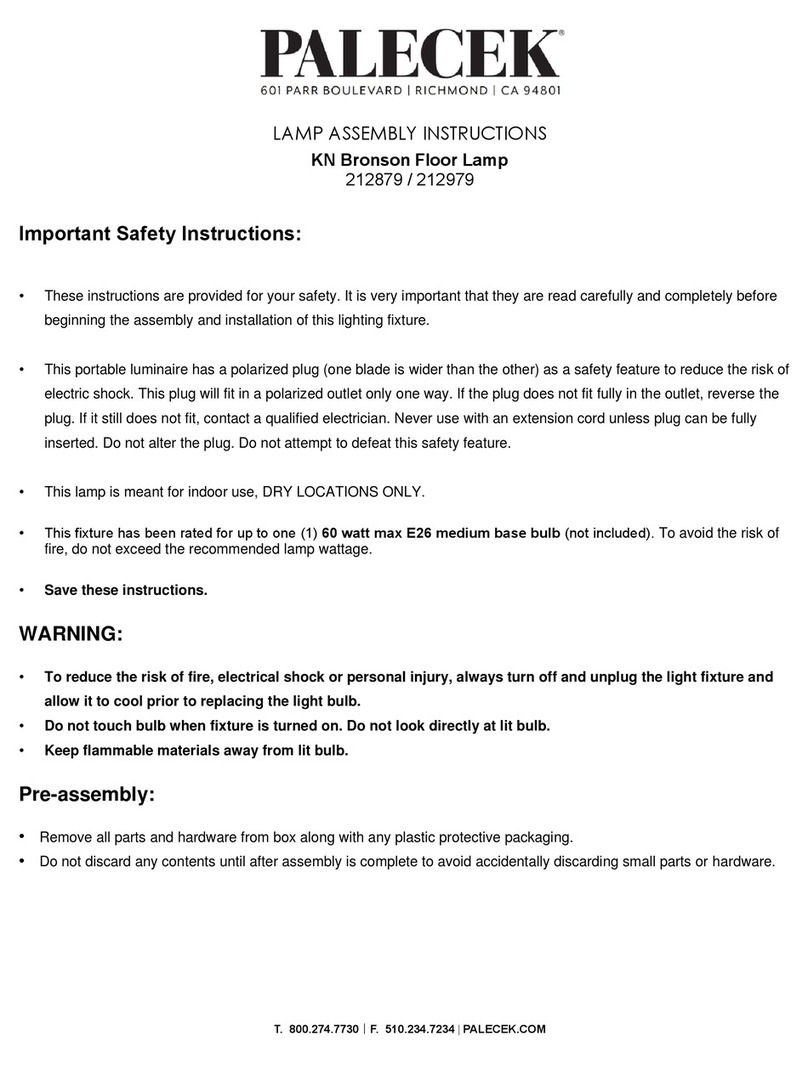
PALECEK
PALECEK 212879 Assembly instructions

Eaton
Eaton Crouse-hinds series operating instructions

Hay
Hay TURN ON instruction manual

Cooper Lighting
Cooper Lighting HALO FSS153TIB instruction manual
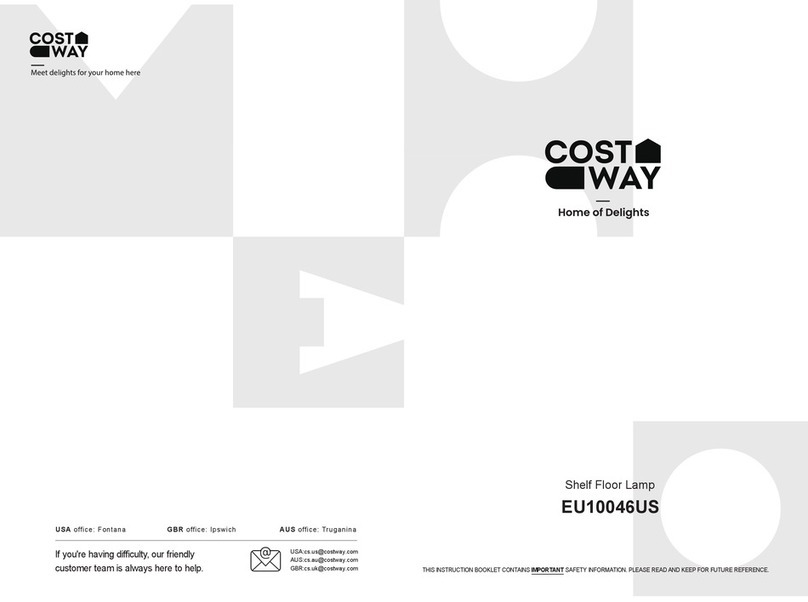
Costway
Costway EU10046US manual

DS Produkte
DS Produkte CF-001M/LED instructions
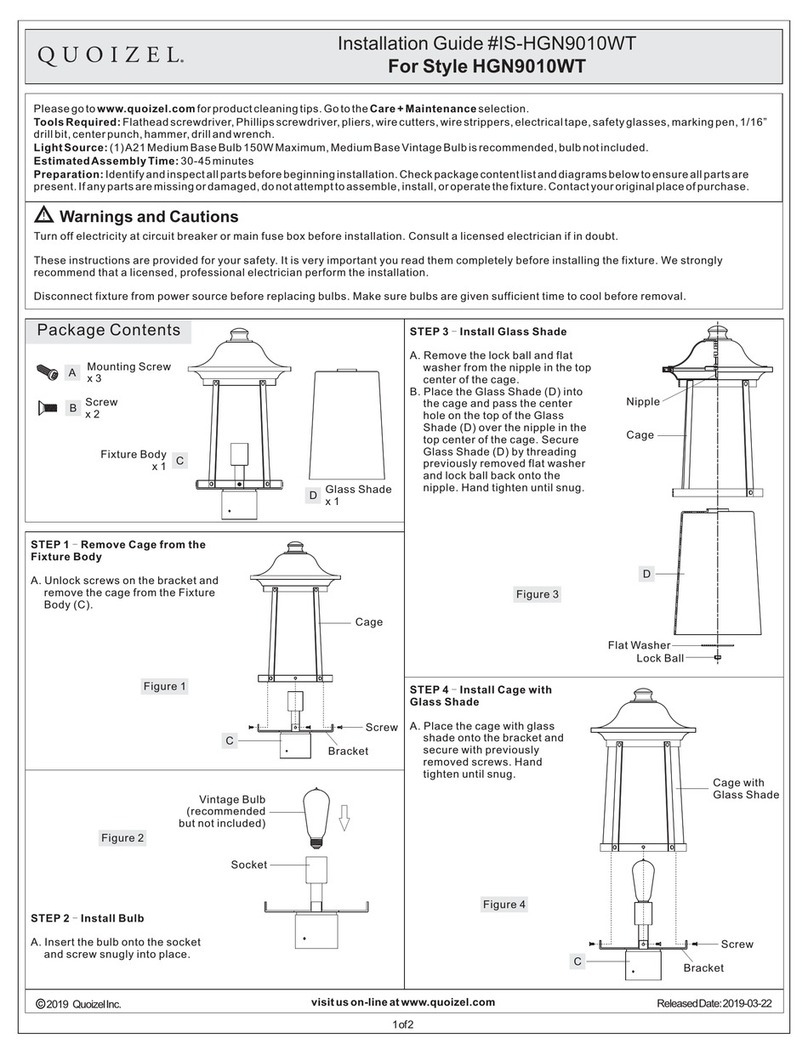
Quoizel
Quoizel HGN9010WT installation guide

Quoizel
Quoizel Westover Outdoor WVR9007IZ installation guide

Hubbardton Forge
Hubbardton Forge Shard Outdoor Sconce XL 302518 Assembly/installation instructions
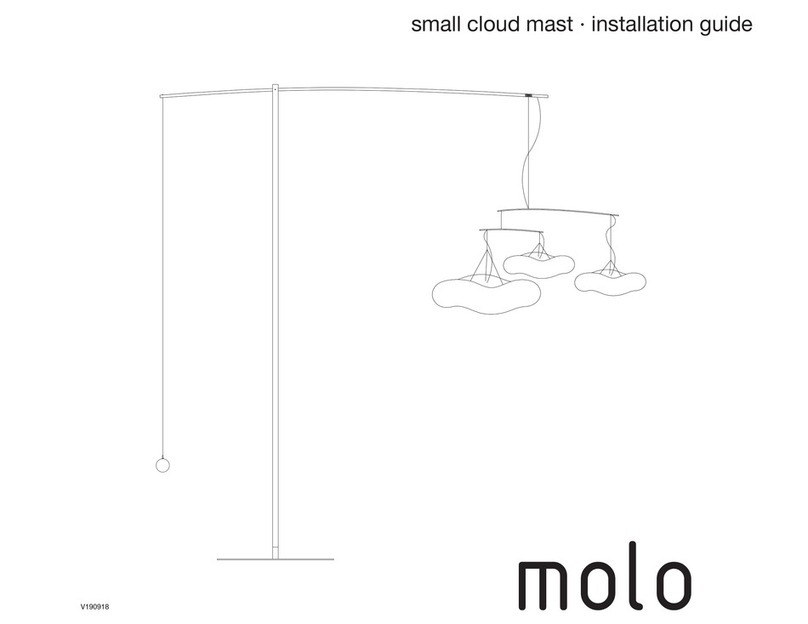
Molo
Molo Small cloud mast installation guide


